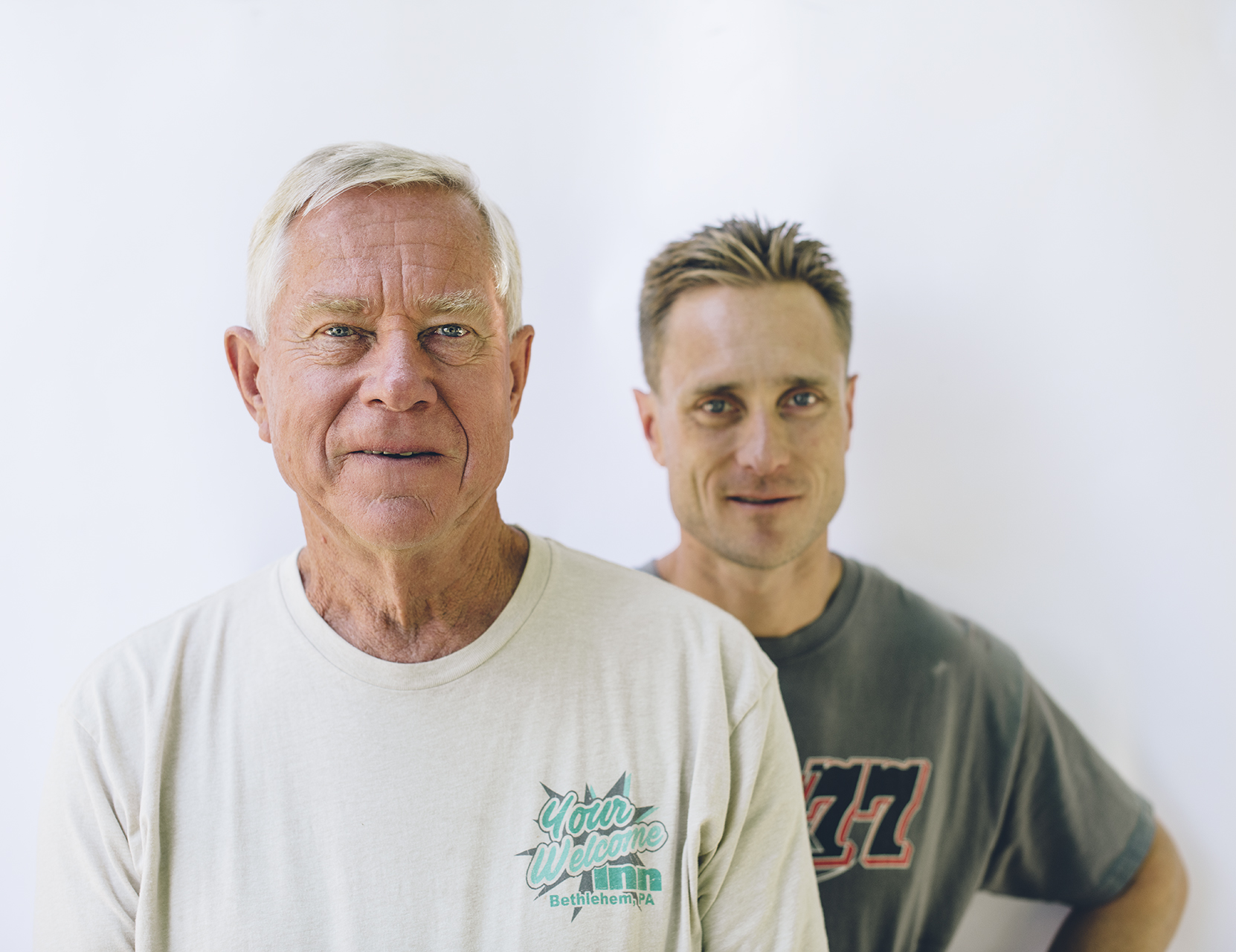Q & A: Richard Forsberg
Father-son sprint car racing duo Richard and Andy Forsberg talk racing and some family history
Interview + Photos: Saroyan Humphrey
Feature | It’s getting close to lunchtime at the Forsberg Racing shop in Auburn, California, and the father-son team of Richard and Andy Forsberg are looking over the partially disassembled No. 92 winged dirt sprint car that Andy wheeled to victory a few nights ago at Chico. The duo are talking over the standard maintenance duties required for the race car after a weekend of action. On this hot summer Monday, there’s a checklist taped to the front wing that's flapping in the refreshing breeze blowing from the two large Portacool industrial fans that keep the shop from turning into an oven.
Related: Q & A : Andy Forsberg
“Usually on Mondays we’ll wash the car and we start doing our maintenance and the motor guy (Mike Proschold) comes up,” explains Richard. “We’ll check the valve spring pressures. All the years I’ve been in racing, I’ve always had somebody work on the motors.”
Richard and Andy Forsberg.
Nearly 200 trophies line one wall of the cavernous workspace. Most are from Andy’s 160-plus main-event victories, 10 Civil War Series titles and multiple track championships, and a few are from Richard’s racing career, including one of the tallest, from Sacramento’s long-gone West Capital Raceway in 1978.
There are also hundreds of photocopied color images wallpapering the walls in mostly sequential order beginning with the early days of the elder Forsberg’s career and continuing through Andy’s. The photos illustrate a near-complete chronicle of Forsberg Racing’s victories (and mishaps). It is a dizzying array of scrapbook images that the guys occasionally use to punctuate their stories as they talk about days gone by.
On August 31, 2018, Richard, 70, will be inducted into Calistoga Speedway’s Hall of Fame. It’s an annual ceremony that coincides with the annual Louis Vermeil Classic, a non-wing USAC-CRA sprint car race, a two-day event that celebrates the legacy of the historic speedway and a regular stop on the USAC West Coast schedule.
Fresh out of high school, Richard started racing at Auburn Raceway in 1968, driving a hand-me-down hardtop. A commercial welder by trade and fully bitten by the racing bug, Forsberg continued to storm the short tracks of Northern California with his home-built modified and super-modified machines throughout the 1970s. He raced weekly at Roseville and West Capital. In ’79, the grassroots racer began driving sprint cars and competed with the Northern Auto Racing Club (NARC) 410 sprint car series. In ’81, Forsberg won his first sprint car race at Calistoga, the biggest dirt track on the West Coast. He would be victorious once more at the famed track in ’84.
Forsberg continued competing with NARC until midway through ’86, when too many blown engines nearly forced him to retire from racing. “Once they put the wings on at Calistoga, I found out how good my motor program wasn’t,” Forsberg remembers. “We broke three motors in seven races and spent $38,000. I said, ‘We can’t afford this!’”
Back in action for the ’88 season and driving a less-costly 360-powered sprinter, the racer once again was on attack, winning three out of 12 main events at the defunct Grass Valley Speedway.
After sharing the family sprint car for a few seasons, starting in 1992, the elder Forsberg turned full-time driving duties over to his son in ’94. Today, Richard continues to help maintain the family’s racing machines.
* * *
You’re going into the Calistoga Hall of Fame this year; how does that feel?
Richard Forsberg: It feels pretty good. I won twice down there as a car owner-driver, and twice as an owner with Andy, and I got a lot of seconds.
I can remember my first time there, I was going down the backstretch looking up at the trees, and I’m going, “What in the world am I doing out here?” No wing, you know; it was pretty scary. It took me a whole year, until the next year, in my own car, to get rid of the fears that were in the back of my mind. We’d go into the turn and unload the left rear and, yikes, it was crazy!
For me, Calistoga is like winning the Indy 500, but I got a lot of aches and pains from that place (pointing to a photo of his car flipping through the air at Calistoga from 1983). It’s as high as the fence.
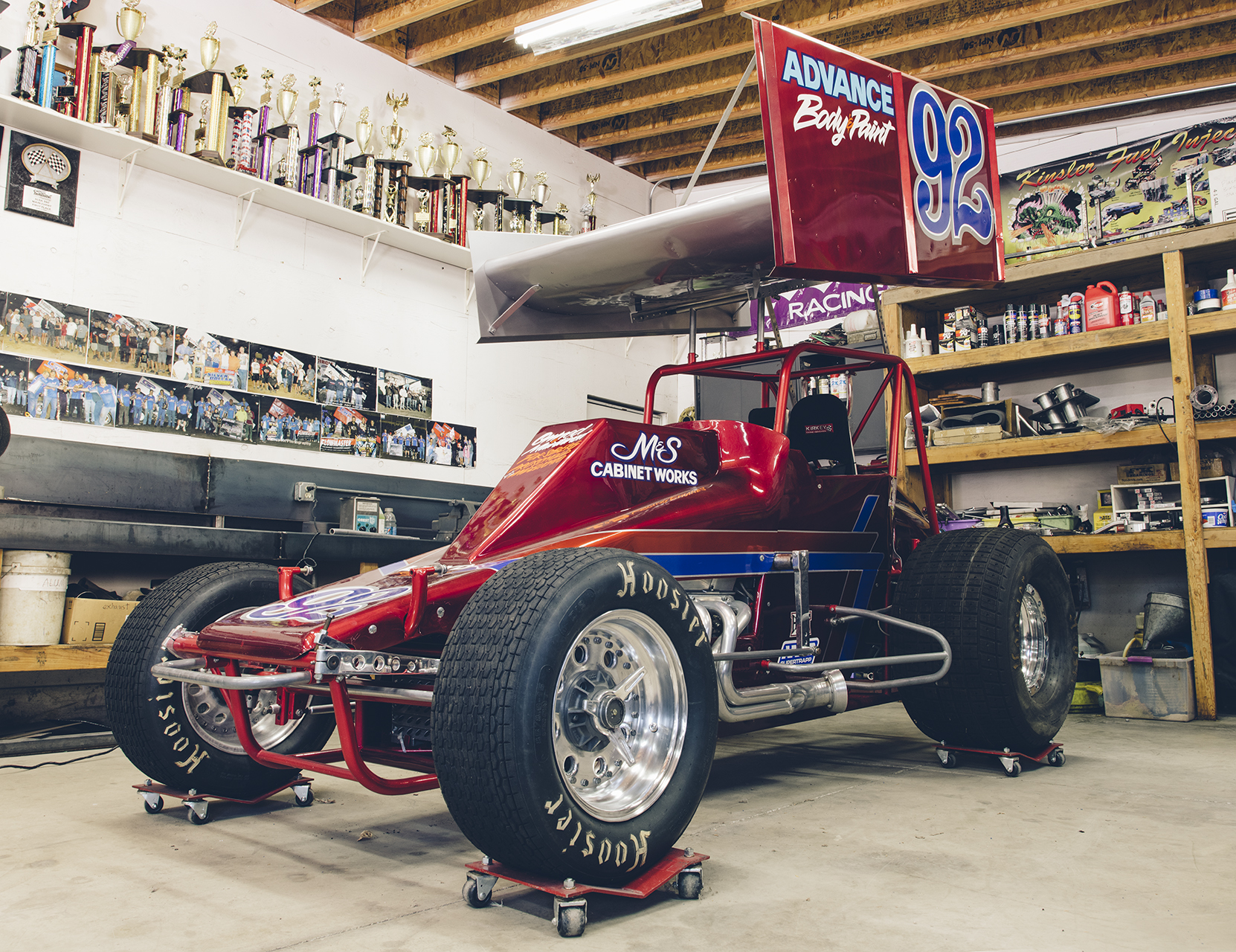
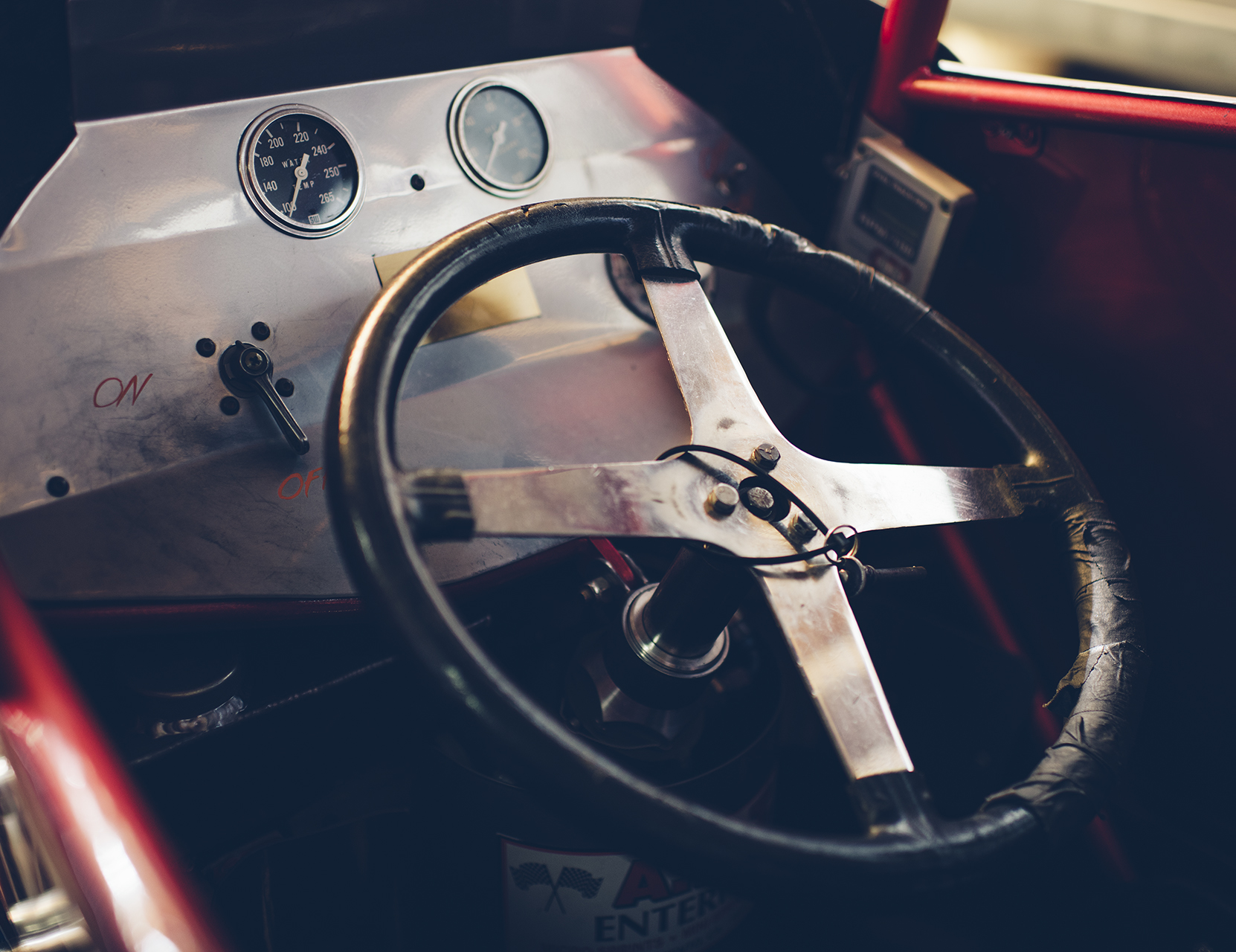
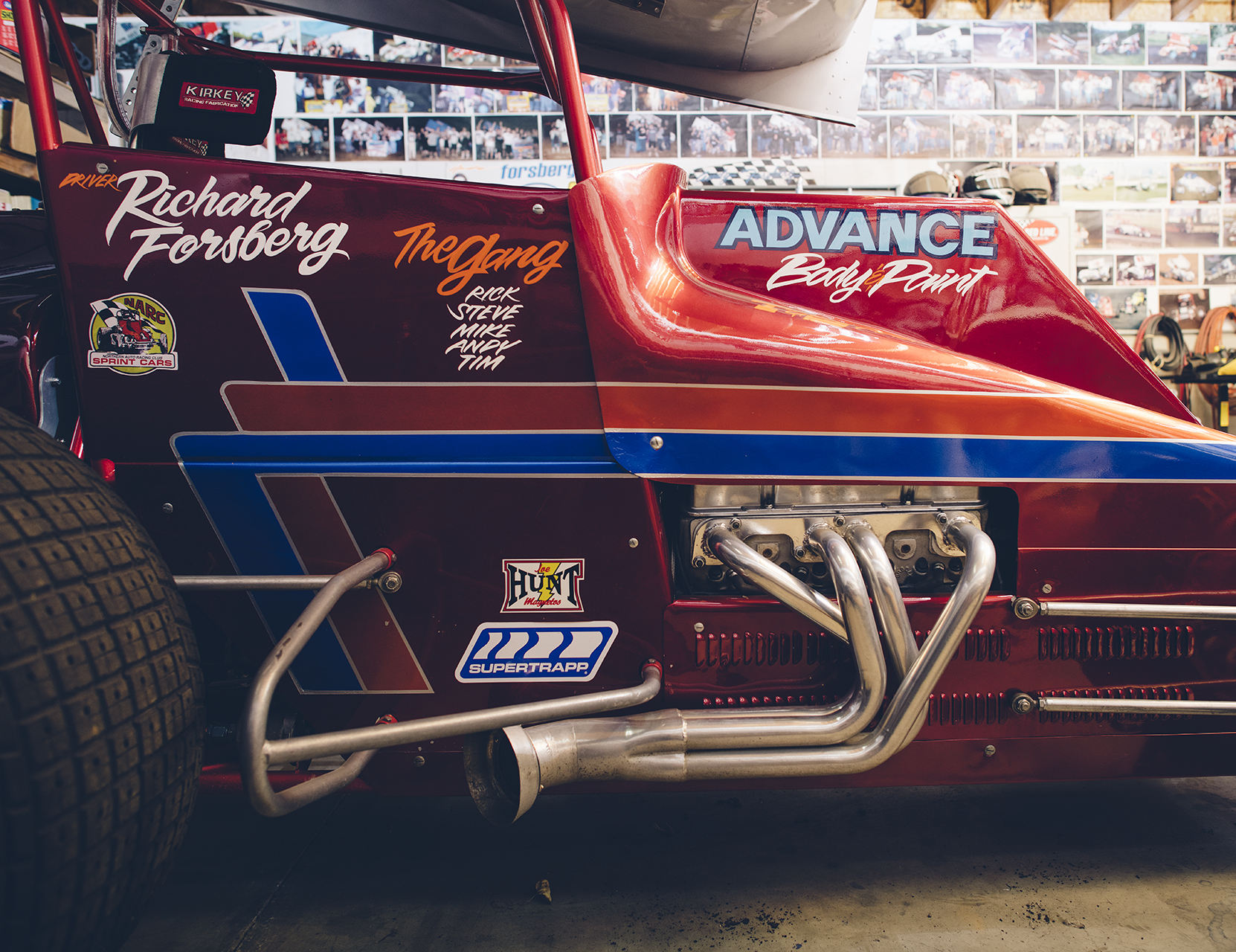
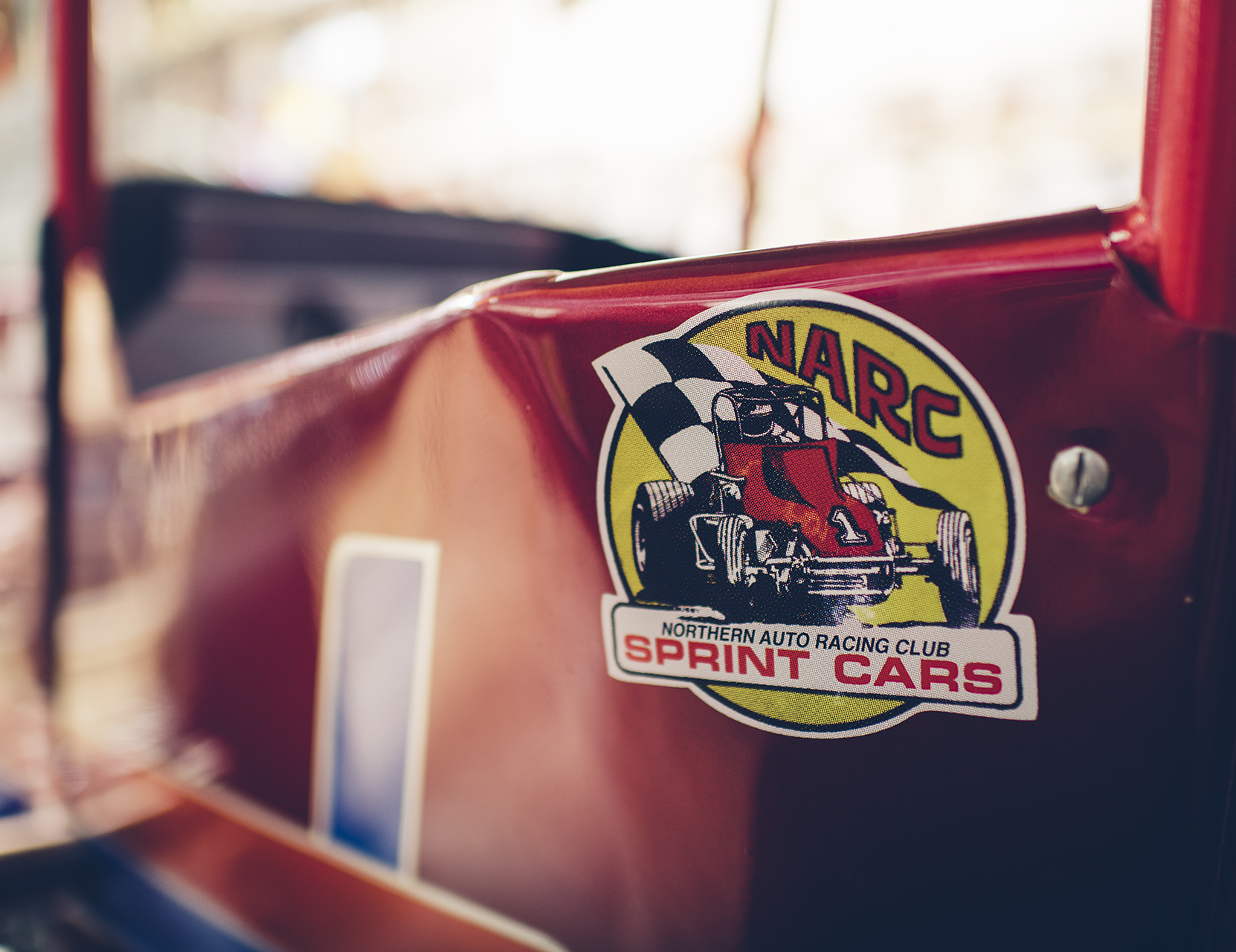
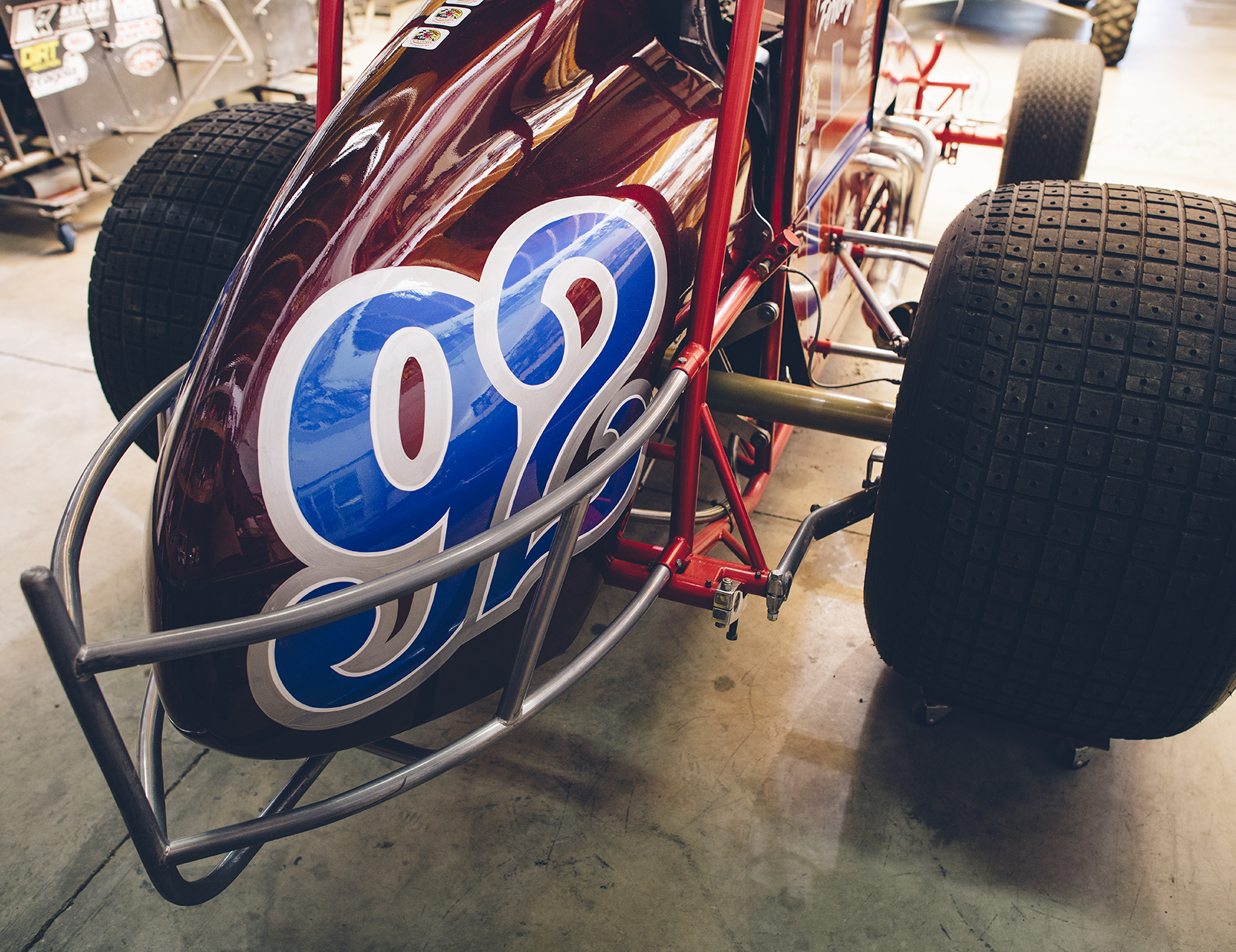
Calistoga was running a lot more often in your day.
Richard: Yeah, we used to run there 12 to 14 times a year (with NARC). Every three-day weekend was a two-day show and usually one night in the middle of the month. The first Sunday in May was always the opener and it was usually a tire burner. The tire we’d finish up the year with, we’d throw it out behind the garage and leave it out to be rained on and everybody’d go out there and pee on it. By then it would be hard enough to survive a day race at Calistoga. Then we’d draw straws for who would mount it up. (laughs) We were too cheap to buy new tires.
Andy Forsberg: The Calistoga opener was always a day race, until about ’83, I think. It was a typical day race; the track wasn’t the greatest. Dry.
Were you guys the first father-son duo to win at Calistoga?
Richard: Yeah.
Andy: Umm, I think Kevin and Sammy (Swindell) did it before us. And then Brent and Tim (Kaeding), or Brent and Bud might be in there, too. It’s slim pickin's for sure.
Richard: But we’re the only father-son that’s won as owner-driver.
“I tell ya, it takes a different breed. Back in my day, we didn’t know any better.”
Andy: You can split hairs but not very many people have done it. I grew up around racing all the time and I went to all kinds of racing. But even when I was a little kid, I knew that Calistoga was a bigger deal. Going to Calistoga was a big, big race. So that’s what I wanted to grow up and do. I wanted to be cool like my dad, or Leroy (Van Conett). When I won there (in 2009), it had come full circle for me.
Richard: We both got “I won at Calistoga” belt buckles.
Andy: It used to be a really big deal to get one and then the novelty, I guess, kinda wore off. Somebody was going through an old barn in Calistoga and they found a box with like 20 belt buckles in it. So, Mike Benson kinda took charge and he distributed a few to people that had won that didn’t have one. So, luckily there was still a handful left when I won and I got one. I got it on display at my house.
We talk about winning at Calistoga, and I know some people take it for granted, like Leroy and Brent and (Chuck) Gurney. Those guys have won so many races there, but we’ve only won there twice. But that’s our Indy 500 or Daytona 500, so we like to talk about it. I’m pretty proud of it, even though I know it wasn’t nearly as cool as the non-wing guys. I had no choice to win there with a wing. I probably couldn’t have cut the mustard without a wing down there.
Richard: I tell ya, it takes a different breed. Back in my day, we didn’t know any better. How we survived with the seats we had back then, I have no idea (points to the custom-fitted seat in Andy’s modern sprint car). I’d have died and went to heaven, if I’d have had a seat like that. Bad things used to happen at Calistoga…
Andy: Especially with the pieces of shit he was racing. I mean, when they run the Vermeil, they don’t run a hell of a lot faster than what they were doing in the mid-’80s. So, to know what that car is and to know it was going as fast as they go now, no thanks.
How do you think your driving styles compare?
Richard: He’s got finesse. I was a stomp and steer driver. (laughs)
Andy: I don’t really consider myself very finesse-y. I think I’ve had a better career because I’ve put myself in a better position as far as putting the ducks in a row. He took it more as a hobby. My mom — his wife at the time — wasn’t super supportive (of racing). So, that made life a little bit difficult back then. We kinda do what we have to do to make things right. He was blowing shit up on the last lap at Calistoga because he had an old piece of shit rear-end in the car.
Andy races the family sprint car, Stockton Dirt Track, 2016.
Well, you must’ve passed some knowledge onto Andy early on and along the way.
Richard: A little bit. When I was getting out of racing, that’s when the shocks started coming in as a big deal. I’m just a mud scraper and a fuel boy now.
Andy: He says his job is just to get me to the track and once I’m there, I’m on my own.
What do you think the high point has been for you in racing, Richard?
Richard: My high point is watching him do as well as he’s done. I can honestly say I get more enjoyment out of watching him race than when I did when I was racing.
But yeah, my high point was definitely winning at Calistoga. It’s right there at the top of the list. I don’t know, in my racing career, I don’t think I won 35 races, did I?
Andy: Yeah, somewhere around there.
Richard: We never kept track. It always seemed like when I was racing, like, at Auburn, when I got real competitive and was about to be the big fish there, I was headed down to Roseville to run on pavement and then when I was getting good there, I was headed to West Capital.
It was a thrill to get my first win at West Capital, too. That was ’77.
How did you get interested in racing?
Richard: Well, back in the day, when I was probably eight years old, I got up on a Sunday morning and there was an old jalopy sitting down in the driveway. It belonged to a guy by the name of Johnny Steele. He was a pretty good racer here in Auburn. He started running stock cars and he ended up at the Daytona 500 during his career. My brother had gone into the Army and I had an old steel-pot army helmet and he says, “You oughtta give me that; I’ll put padding in there and use it as a crash helmet.” So, I gave it to him. I can remember kneeling down at Auburn (Speedway) talking to him under the fence on the front straightaway and seeing what he used for a shoulder harness. It was an old fan belt that he’d wrap around and slip over the back of the seat.
Andy: He used to be within walking distance of the Auburn track. There used to be a car track at the Auburn Fairgrounds. Now it’s a motorcycle track.
Richard: My other neighbor, Larry Viceroy, he built cars, and he started running Roseville and West Capital and I used to ride down there in the back of his truck. One day, my parents were coming up the freeway as we were going down there and my mom saw my head in the back and she said, “If they can’t put you in the front seat of that truck, you can’t go to the races anymore!” (laughs)

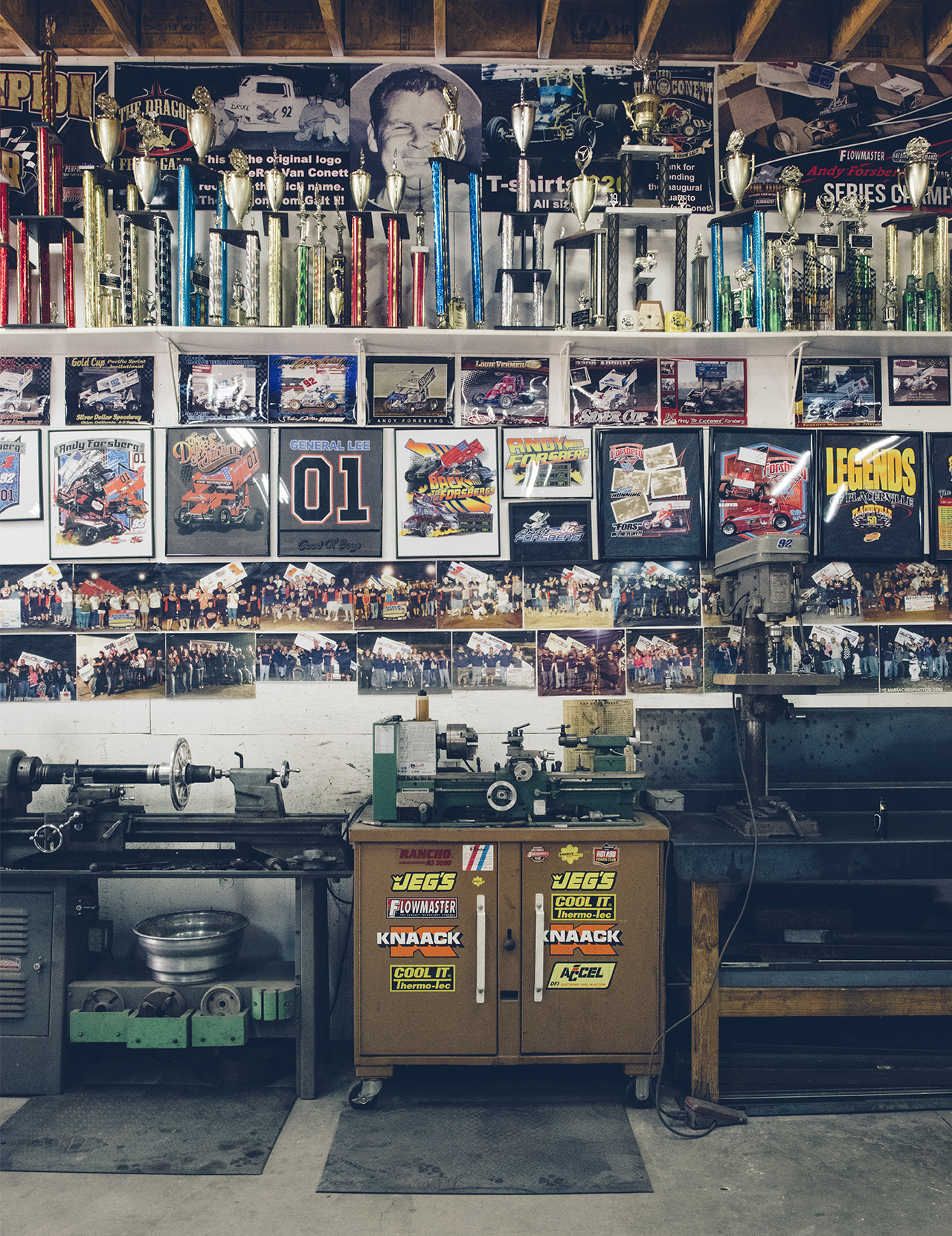
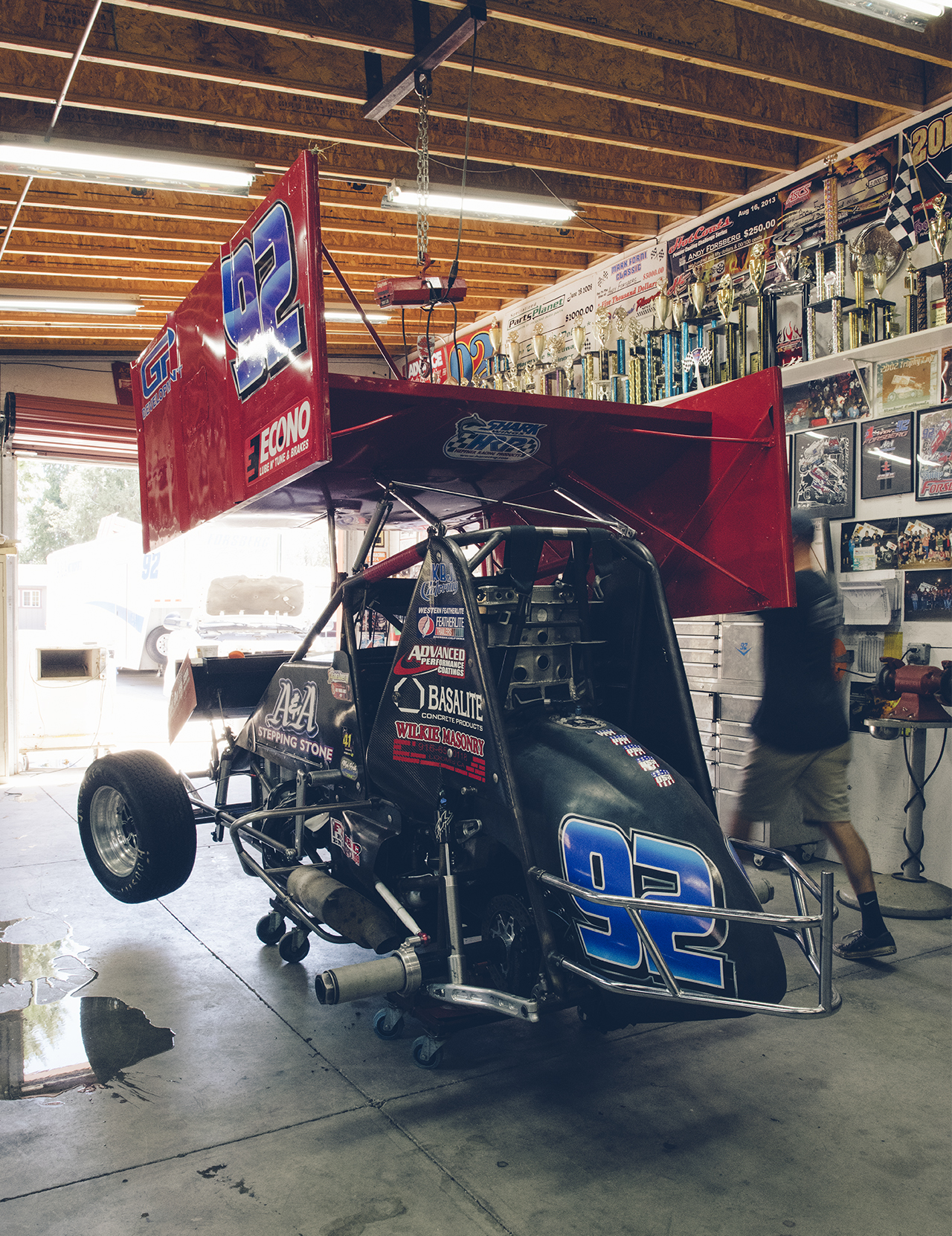
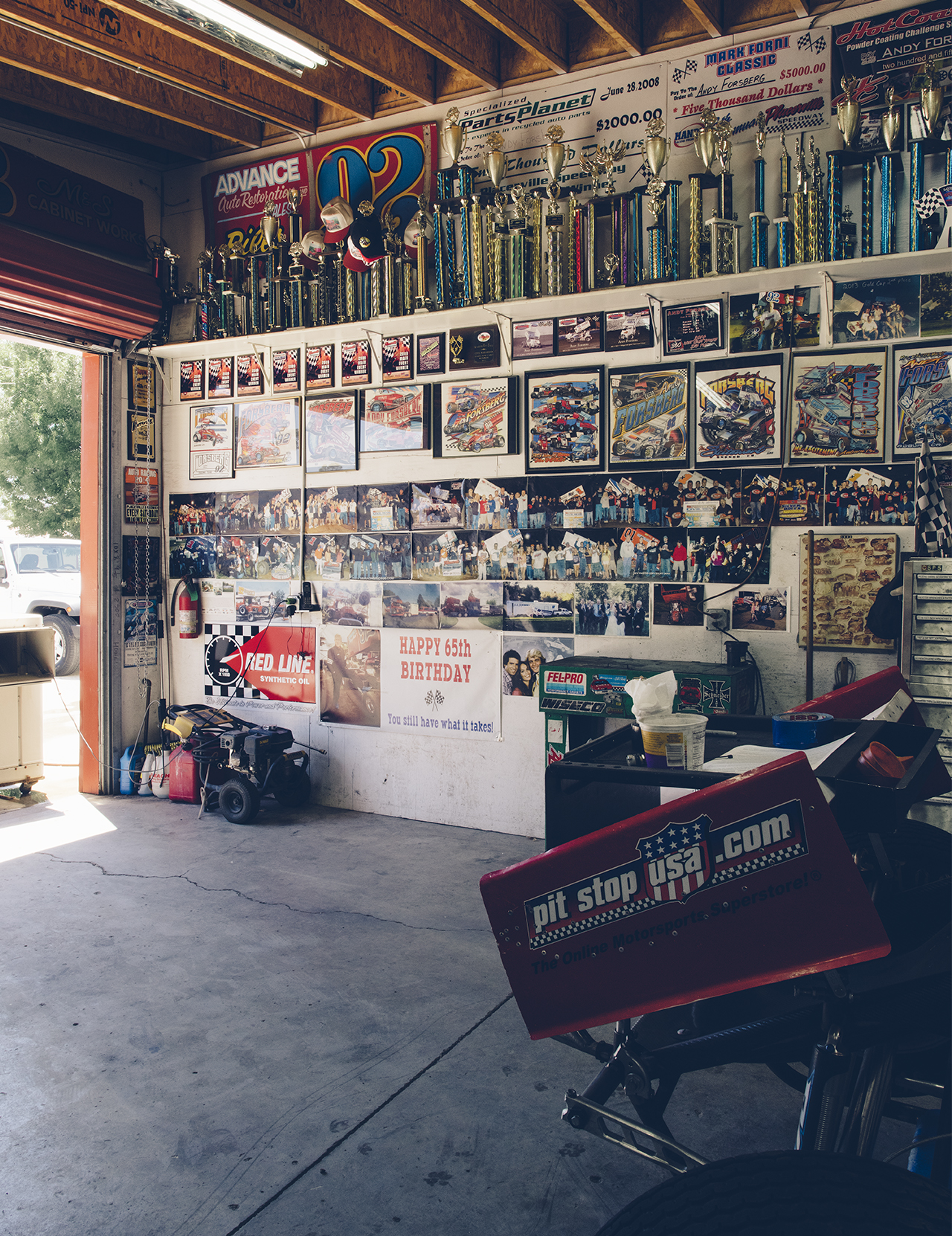
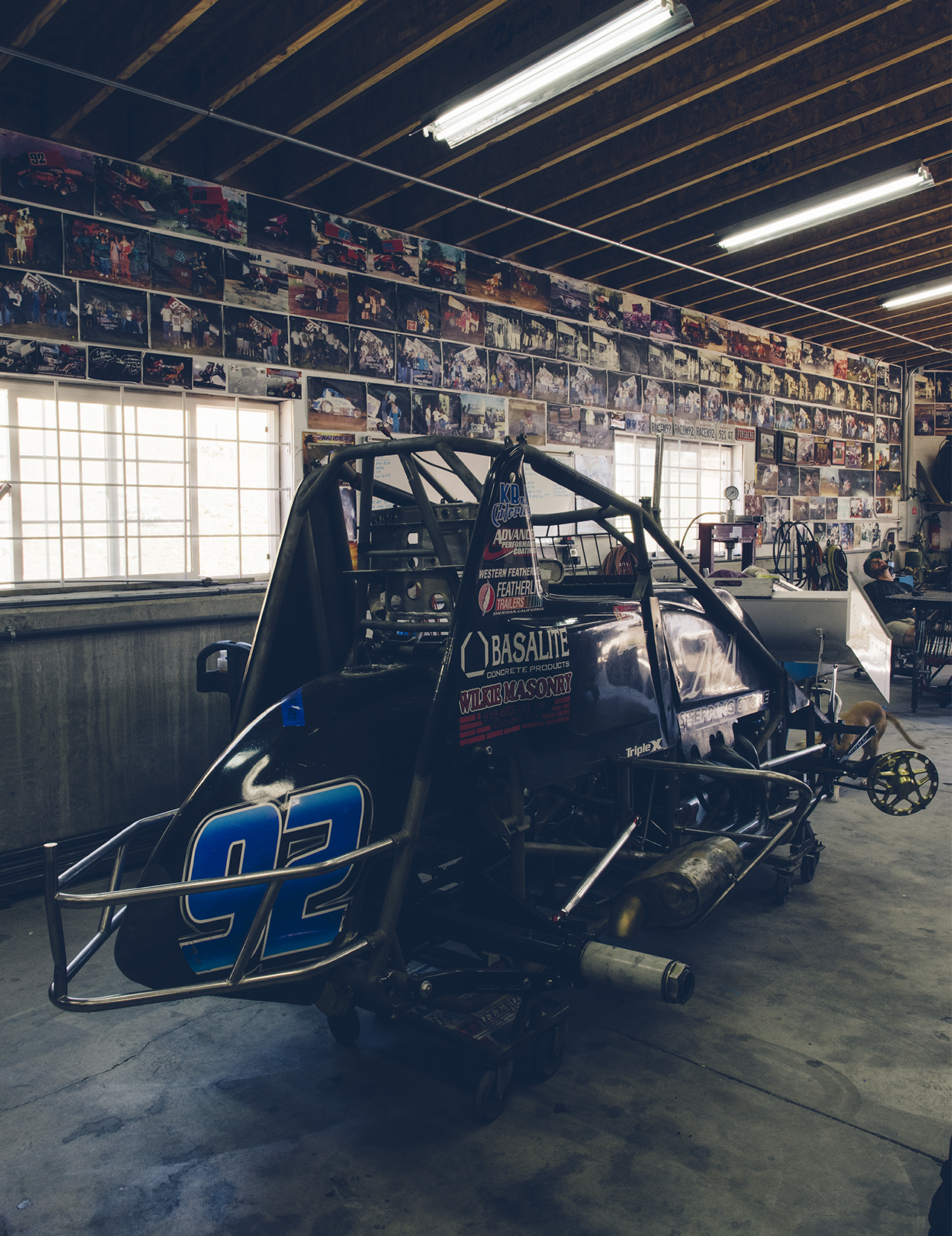
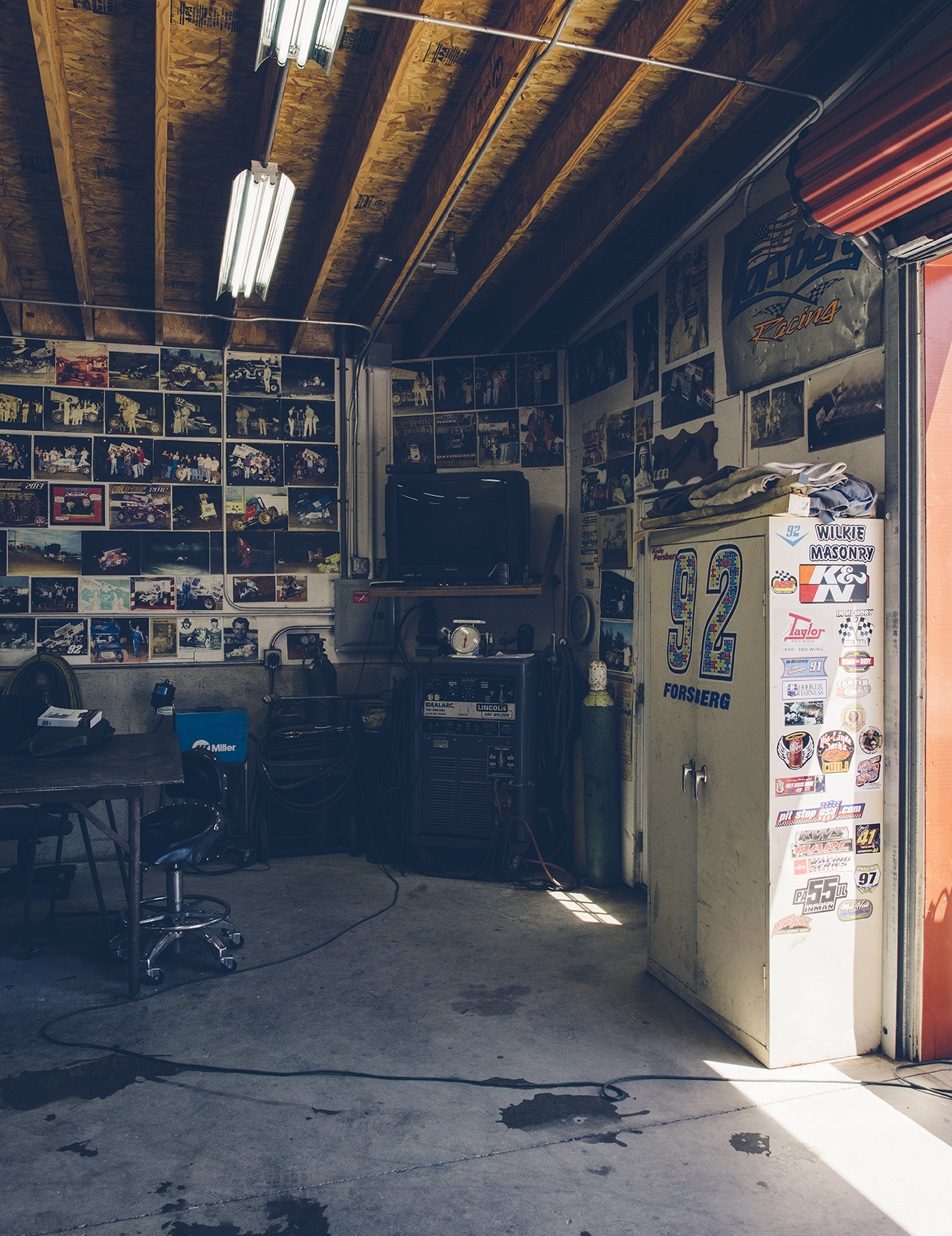
Anyway, I’d work on that car. I’d come home from school and go down there before the races, wax it and everything. It was an old, beat-up thing. Why it needed wax, I have no idea.
Then, when you had to be 18, I snuck in there and drove a stock car six times at Auburn. They had six (claimer) cars there at the racetrack and whoever worked on ’em could drive ’em. So me and my buddy, we’d go down there, we’d work on ’em, dump a little gas in and drive it. They didn’t run very good but there was one good car, and that was the car I won a main event in and the rest of ’em wouldn’t run half the time. We weren’t smart enough to work on the points or carburetor. It would flood out in the corner. We were in high school just having fun. They thought we were 18 but we were really only 17.
So, you started racing your neighbor’s hardtop at Auburn in ’68… when did you start building your own cars?
Richard: Yeah, I built my first sprint car (in ’79), built it from scratch. I built all of my cars.
Andy: That car over there (points to the restored Lloyd-chassis car) was the first store-bought car they ever had, if you can call it store bought, and they got that in ’84.
Richard: There was a guy sitting up in the grandstands at Calistoga and he was friends with Charlie Lloyd’s brother and they come walking down in the pits and he said, “We picked you to win the main event tonight — and you won — we want to see you in a Lloyd car. I’m thinking, “Oh, yeah; right, OK…” So it just kept progressing and we flew back to Pennsylvania to pick it up. I drove it at Selinsgrove, made it through the heat race and the first lap of the main event, a rock flew up and knocked the brake line off. So, I went 3,000 miles for 11 laps. That was in ’83 and we shipped it back (to California).
Besides Auburn, where else were you racing early in your career?
Richard: Early on, with the modified, I raced the whole season at Roseville, actually two seasons. Then I decided I wanted to go to West Capital. They paved Roseville in ’69 or ’70. I raced at Roseville before it was paved. I’m one of the few people who can say they’ve won a main event at Roseville on the dirt and asphalt.
Andy: That red T-bucket (points to a picture high up on the wall), I have a picture of it on the dirt and that same exact car on the pavement, in the same season.
Richard: They (Roseville officials) were like, “You guys want pavement? OK; well, it’ll be done next week.” It took ’em three weeks and they put a concrete wall around it and put the banking in. Roseville, when it was dirt, was basically pretty flat.
How do you remember racing at West Capital?
Richard: It really hurt my feelings when West Capital closed up. It set empty for so many years and you’d drive by there to go to Petaluma, or Baylands, or wherever and it was just sitting there empty. It was really hard. I think I had the most fun racing there. I remember after the races we’d be there partying and stuff, ya know, and John Padjen would come by and say, “Hey, lock the gate on your way out.” So, he’d leave and we’d unload the race cars. We’d drive some cars onto the corners of the racetrack to light up the place a little bit and anybody that would wanna go out and make a lap, could go out and make a lap (laughs). If you did that nowadays, we’d be in a lot of trouble.
It used to be nothing to have 60 or 70 cars there for a Saturday night show. It was kind of a stomp-and-steer place, just a cool place. Nowadays, I hate these dry, slick, hard tracks. I like a few holes and some bite out there. I don’t mind doing a wheel stand.
“One night I cut the perfect lap, and it was just a tick off.”
I lost the championship by one point in ’78 (to Joe Hill). And, ’79 was the last year (before it closed). What would’ve been the last night of points, I was ahead by three and we got rained out the week before, so they decided to add one more race. I called it the “Joe Hill Benefit Race.” It’s funny; it took me a long time to get into the hall of fame at West Capital. I was talking to Joe one time before he died and I said, “Hell, I think the both of us should go into the hall of fame at the same time, you know…” and he kinda looks at me and says, “I’m already in.” I thought, “Oh, that’s great.” Joe and I were actually best friends. We always partied together. It would’ve been really cool if we could’ve tied.
Is there an actual hall of fame space?
Andy: They don’t have a physical location. It’s basically come down to a bunch of old people trying to keep it alive, and they’re slowly but surely dwindling away.
Richard: It’s almost history.
Andy: They’re trying to put a museum together and raise money.
Richard: But there’s nobody that’s going to throw a million dollars at it.
Andy: Bonnie Chisholm and Roy Wilhite are the two that are beating the drum hardest…
“I can remember the feeling I got watching him win. That was more fun for me than when I win,” Andy says.
Richard: And when something happens to them…
Roy used to put up money at West Capital for — I think it was an 11 second lap — or something. It got up into the thousands of dollars. One night I cut the perfect lap, and it was just a tick off. He used to always come up to me, “When are you going to lay down that perfect lap? I wanna give you that money.” I was never able to do it. (laughs)
So, the money was never taken?
Richard: Nope. But it was on the line. I can remember Gary Gerould saying, “It’s there.”
When did you start racing at Grass Valley?
Richard: Well, we went broke in NARC in ’86, and so, the following year we went to 360 and he (Andy) was like 12 years old, and I said, “When you’re 16, you can start driving.”
Andy, you grew up at the race tracks, obviously; how do you remember those early days?
Richard: He was almost born at the track; his mother went into labor at West Capital.
Andy: I didn’t know any better…
Richard: We got an old steering wheel over there that he chewed on. He teethed on an old steering wheel. (laughs)
Andy: I just knew I wanted to drive. I went through the progression of wanting to drive a sprint car and then I said, “I want to be a millionaire and run Indy cars, or NASCAR.” That becomes obvious when you get old enough; you see that’s not going to happen. So then it became wanting to be good around here.
Richard: When he graduated from high school, he had the chance to either go to the Daytona 500, or take the money it cost to go to the race. So me and my buddy, we’re all excited to go to the 500. But he took the money.
Andy: I thought I’d be at the Daytona 500 on my own. I wanted to buy a truck and I think it was like $2,000 they were going to give me for graduating. I said, “I’ll be in Daytona in about three or four years; you just watch.” I still haven’t been there. (laughs)
Richard: That’s the coolest race. I was there in ’73 when Richard Petty won. We went to a meet and greet last year during the Sonoma (NASCAR Cup) weekend and I got to talk to Richard Petty. Ray Evernham was there, Boris Said. … Anyway, I come up to Richard and said, “I saw you win the Daytona 500 in ’73,” and all of a sudden, man, we were best buddies. That was pretty cool.
Did you ever have a chance to go to Riverside?
Richard: Yeah, (Joe) Lehman was building a stock car. He got a car from Johnny Steele and they were supposed to go to Riverside, and I’d never driven a stock car. So I wasn’t that enthused about it. I think he ended up going with Jerry Graham. So, I didn’t go.
Andy: You could’ve had a NASCAR start if you just would’ve done it, but you didn’t want to drive a stock car.
Richard: And on a road course. (laughs) I coulda woulda shoulda …
Andy: It probably didn’t make any sense then, but looking back, you could’ve got lapped by Richard Petty and Parnelli (Jones) and all those guys.
Richard: I would’ve got run over… (laughs)
Andy: Yeah, and caused a wreck. (laughs)
Did you miss driving when you stepped out?
Richard: Not really. I kinda missed it, then one time we were racing Chico (in 2002) and we were going to run speed week and we got a new motor for the 360 and Andy says, “Well, you drive the car and shake it down.” Shoot, it had been a long time. I’m good for three laps and my tongue starts hanging out. There comes a time when you’re too old for this shit. I had a lot of fun; I wouldn’t change it. I think it’s kept the family pretty close.
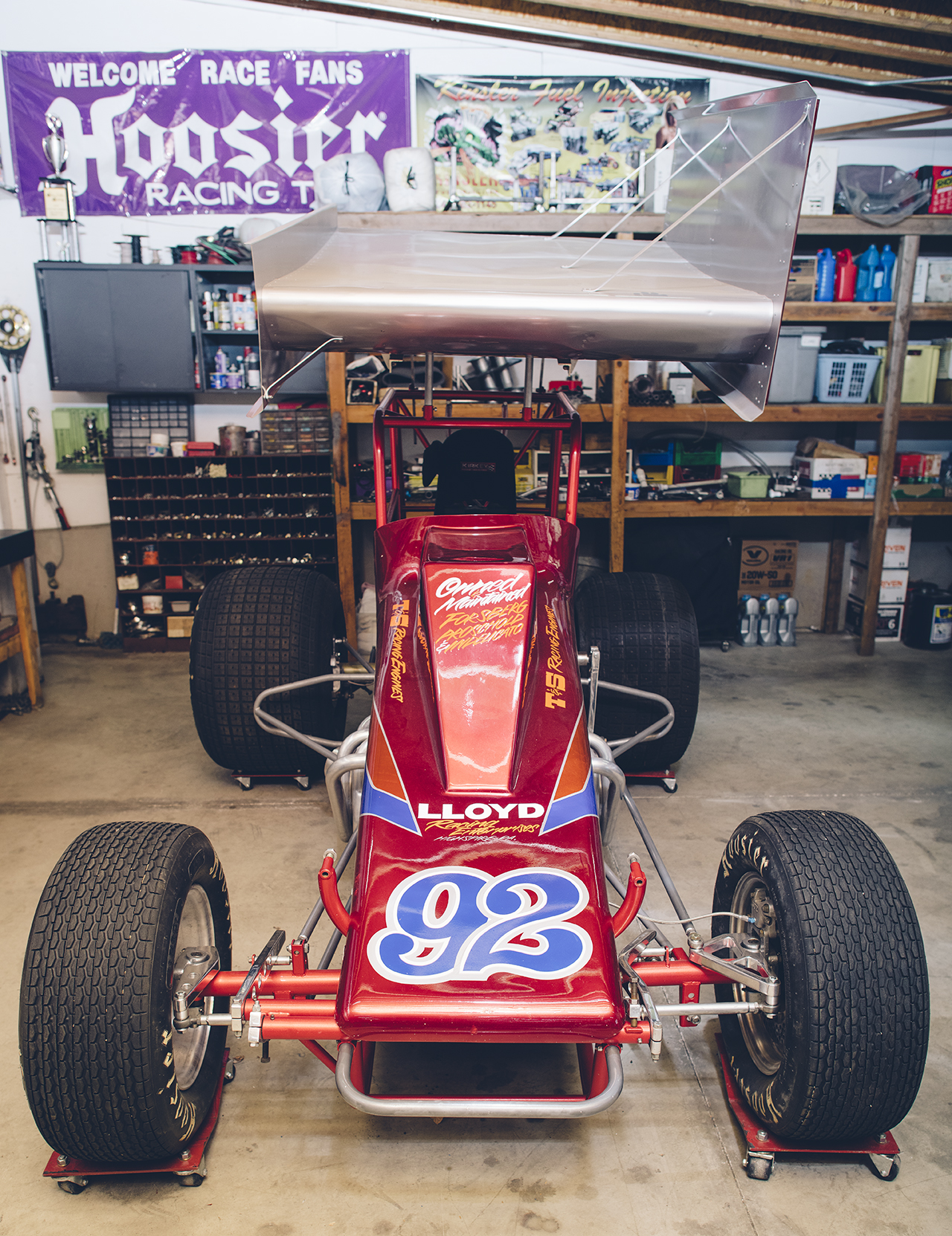
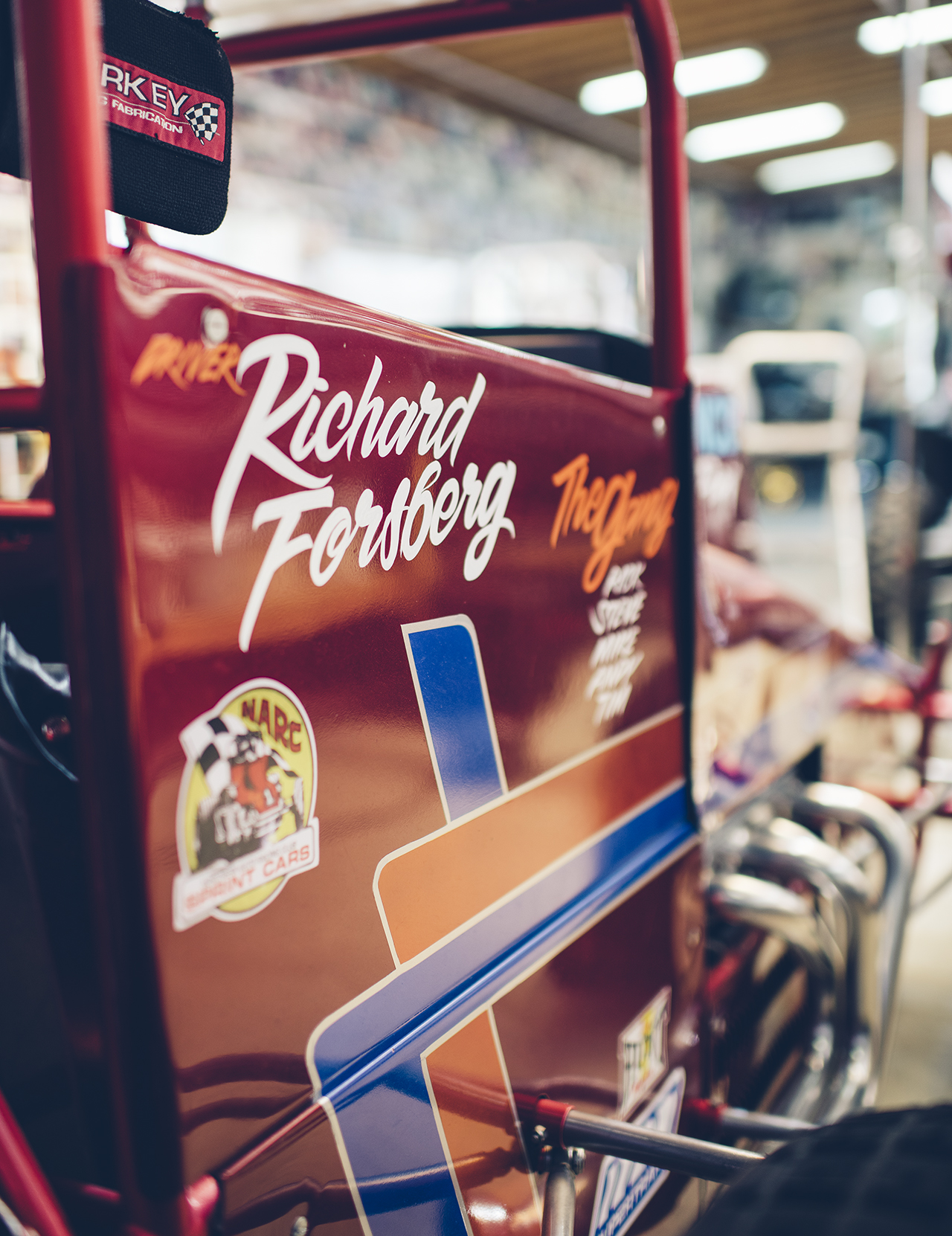
You still like taking your Lloyd out for the vintage exhibition races, right?
Richard: Oh, yeah. We went to Stockton (Dirt Track) one time, and they said, ”OK, the vintage cars can run 10 laps,” and I think I said to the guy, “Eight laps is plenty.” (laughs)
What do you typically do at the shop after a race weekend?
Richard: I’ll get the motor all cleaned up and nozzles cleaned, lubed up, and Mike (Proschold) comes up and runs the valves. John (Timms), he’s doing the torsion bars, checking the nuts and bolts. What used to take all week, we get done in about six hours.
Andy: We’ll check all the crap that they used to do once a year.
Richard: We wouldn’t do all that back in the day. Maybe that’s why our shit blew up all the time.
Andy: (laughs) Mike has been with my dad since 1978, and he’s retired now and he needs something to do, too. So between all of us, it’s a well-oiled operation. This thing could basically be loaded up Monday night, every week.
The engines cost a little more now than they did back in the day.
Andy: Yeah, and it makes you care a little more.
Will you run the same engine all year?
Andy: We keep track of laps. We try to put a 1,000 laps on ’em. That works out to about 20 nights. So I keep careful notes on how many laps we run each night.
Richard: Then we’ll send it to (Tony) Borello. We don’t do any major engine stuff here.
Andy, you had a big wreck at Chico a few weeks ago (June 29). How bad was the car damaged?
Richard: Oh, yeah, we lost the rear end, both birdcages, torsion bar arms, shocks, a wheel — about $3,500 worth of stuff.
Andy: We still finished though, and won! (laughs) The real reason I got tore up is I knew it was the last lap and kinda said, ”What the hell, let’s see if this will work.” It kinda did, we still won but we kinda paid the price.
Richard: We fix a lot of stuff here.
Andy: We have two complete cars, two 360s, a 410, and a spare car back there that’s just a frame and body. My dad, John and Mike, they’re old school and they used to build shit from scratch. So for them to repair a rear end, switch an axle out, with a new center section, it’s nothing for them.
How long will you keep a car and chassis?
Andy: This is “Old Faithful” here (points to the car in front of the shop). I’ve been running this car since 2013 and I got it from F&F (race team) when I was driving for them. They wanted to buy a new car and I liked driving this car for them in ’11 and ’12. When they told me they were buying a new car, I bought this one. We’ve kept running it. It’s 10 years old. It’s still winning races. It’s starting to fall apart and crack. We gotta kinda keep up on it but it’s been a pretty good piece for us. We ran second and a couple of thirds at Gold Cup with it. It’s a car that I really like. We got a package that works for it.
I know where the sister car for this one is, too. There’s another 2009 sitting in the weeds somewhere in Citrus Heights. So if I ever need that, I’m going to go get it. It’s an A.R.T. chassis.
Richard: He’s got two new ones down there he doesn’t like (points to the back of the garage).
Andy: I don’t like ’em. We just keep going back to this one.
And you keep holding it together…
Richard: Oh, yeah. We’ve replaced the front rack in it because it was cracked. We always look it over closely. But “Eagle Eye” there, he sees the cracks.
Andy: A couple weeks ago, we had it out in the driveway, ready to push it on the trailer and I found a crack in one of the support tubes. So we pushed it back in. I don’t see myself buying another car. When this car dies, the 92s might be done.
Richard: (laughs)
Well, it seems pretty obvious you’re still having fun racing.
Richard: Yeah, you know, if it’s not fun it’s not worth doing it.
Andy: If it’s not fun, we’re not going to do it.


